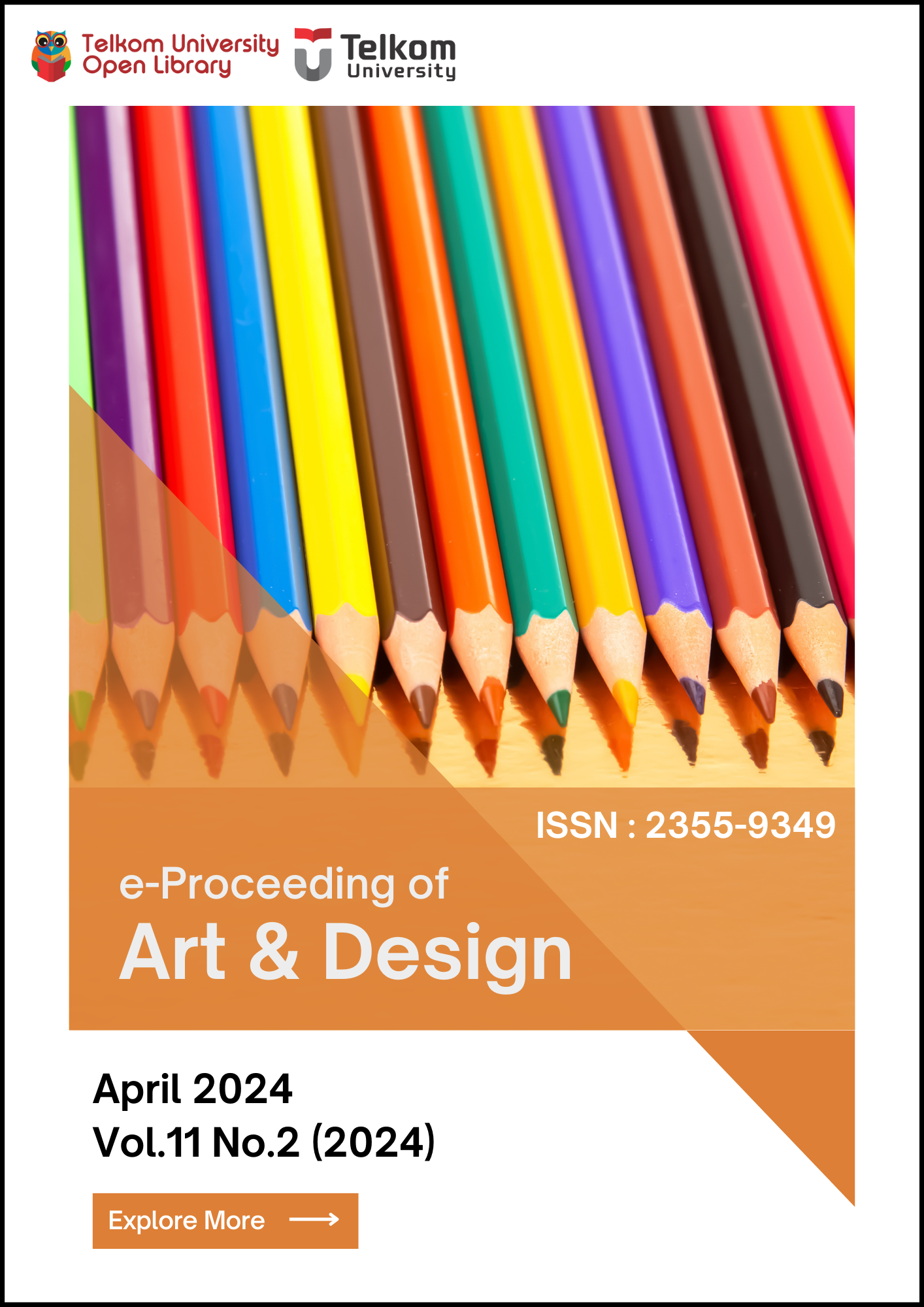DESIGN OF ILLUSTRATION BOOK ON WASTE MANAGEMENT EDUCATION FOR CHILDREN
Abstract
Improper waste management results in environmental contamination, affecting land,
water, and air quality. This contamination fosters disease-spreading animals like rats,
cockroaches, and mosquitoes. Indonesia ranks as the world9s second-largest plastic waste
contributor, generating 14.96 million tons annually with 6.8 million tons unprocessed due to low
awareness and weak regulations. The habit of littering of adults can be passed onto their
children, highlighting the importance of teaching waste management to young children for
environmental care and discipline. This research aims to raise awareness using qualitative and
quantitative data to produce an educational illustration book to instil waste management
principles in children and shape their character.
Keywords: Children, Education, Illustration Book, Waste Management
References
Ahmad, S., Wasim, S., Irfan, S., Gogoi, S., Srivastava, A., & Farheen, Z. (2019).
Qualitative v/s Quantitative Research. 6, 2828-2832.
Boyatzis, C. J., & Varghese, R. (1994). Children9s Emotional Associations with
Colors. The Journal of Genetic Psychology. 155(1), 77-85.
Herdiansyah, H., Brotosusilo, A., Negoro, H. A., Sari, R., & Zakianis, Z. (2021).
Parental Education and Good Child Habits to Encourage Sustainable Littering
Behavior. Sustainability. 13(15), 8645.
Indonesia9s Waste Management Sector Still Going Strong. (2021). AHK Indonesien.
Accessed at https://indonesien.ahk.de/en/infocenter/news/newsdetails/
indonesias-waste-management-sector-still-going-strong
Ismail, M. (2021). Pendidikan Karakter Peduli Lingkungan dan Menjaga Kebersihan
di Sekolah. Guru Tua: Jurnal Pendidikan dan Pembelajaran. 4(1), 59-68.
Kollmuss, A., & Agyeman, J. (2002). Mind the Gap: Why Do People Act
Environmentally and What Are the Barriers to Pro-Environmental Behavior?.
Environmental Education Research. 8(3), 239-260.
Kusrianto, A. (2007). Pengantar Desain Komunikasi Visual. Andi, Yogyakarta.
Muliaty. (2021). Indonesia9s Flooding Issues. Journal of Indonesian Scholars for
Social Research. 1(1), 20-24.
Müller, R. J., Kleeberg, I., & Deckwer, W. D. (2001). Biodegradation of polyesters
containing aromatic constituents. Journal of biotechnology. 86(2), 87-95.
Ngeri! Tumpukan Sampah di Indonesia Bisa Menyaingi Tinggi Candi Borobudur.
(n.d.). Kejar Mimpi. Accessed at https://kejarmimpi.id/ngeri-tumpukansampah-
di-indonesia-bisa-menyaingi-tinggi-candi-borobudur-
html#:~:text=Permasalahan%20sampah%20yang%20terjadi%20di,%3A%20R
euse%2C%20Reduce%2C%20Recycle.
Pertiwi, A. A., Mustikawan, A., & Siswanto, R. A. (2016). Perancangan Buku
Interaktif Pentingnya Memilah Sampah Dalam Upaya Membentuk Kebiasaan
Mimilah Sampah Untuk Anak-Anak. e-proceeding of Art & Design, 3(3).
Prüss-Üstün, A., Wolf, J., Corvalán, C., Bos, R., & Neira, M. (2016). Preventing
Disease Through Healthy Environments: A Global Assessment of the Burden of
Disease from Environmental Risks. World Health Organization. Purificación.
Ratnasari, E. M. & Zubaidah, E. (2019). Pengaruh Penggunaan Buku Cerita
Bergambar Terhadap Kemampuan Berbicara Anak. Scholaria: Jurnal
Pendidikan dan Kebudayaan. 9, 267-275.
Rustini, T. (2012). Pendidikan Karakter Anak Usia Dini. Cakrawala Dini: Jurnal
Pendidikan Anak Usia Dini. 3(1).
Sabira, D. E. D., Kadarisman, A., & Siswanto, R. A. (2022). Perancangan Buku
Ilustrasi Bahasa Jawa Banten Sebagai Media Pendamping Belajar. eProceeding
of Art & Design, 9(5).
Soewardikoen, D. W. (2019). Metodologi Penelitian: Desain Komunikasi Visual.
PT Kanisius, Yogyakarta.
Suwarno, P., & Nurhayati, N. (2021). Traditional Views and Attitude Toward
Waste and Rivers in Indonesia. E3S Web of Conferences. 317(01002).






